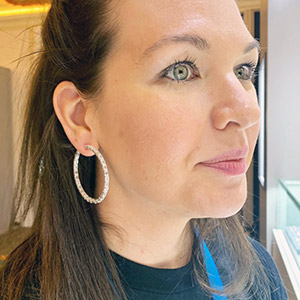
A new book from Van Cleef & Arpels about its “inspirations, materials, and techniques” seeks to be the most comprehensive compendium of the company’s work, giving collectors and fans of the storied house a peek into how the collection was made and its continued relevance, the brand says.
Volume 1 of The Van Cleef & Arpels Collection (1906-1953) comes out June 24 during Paris Couture week. This first volume includes nearly 700 jewels, precious objects, and watchmaking pieces as well as 200 archival documents that the Maison organized for their historic, artistic, and cultural value.
The book covers three chapters in Van Cleef & Arpels’ history: its creative boom from 1906 through 1925, the establishment of its unique identity from 1926 through 1937, and its expansion from Paris to New York from 1938 through 1953.

One goal for Van Cleef & Arpels through this book is to ensure jewelry is considered among the decorative arts, something the Maison has worked on for years, Nicolas Bos, president and CEO of Van Cleef & Arpels, says in an email interview.
Van Cleef & Arpels will debut a second volume, which covers 1954 through 2000, in this publishing effort; a date has not yet been set for its release, the company says, but it likely will be in 2026 or 2027. Published by Atelier EXB, the book also is being released in a digital version, available free online and in both French and English. Its content will grow as Van Cleef & Arpels makes new acquisitions.
“The dates [that] were chosen to punctuate the two books correspond to pivotal moments in the history of the Maison,” Bos says. “1906 coincides with the opening of the first boutique at 22 Place Vendôme in Paris. The year 1954 also is significant since it saw the launch of the la boutique concept.”

Van Cleef & Arpels aimed its Place Vendôme space at a new, “young” clientele as they were described in the advertisements of the time, Bos explains. This jewelry was more personalized and based around ornamental stones and gold craftsmanship. These also were the first examples of Van Cleef & Arpels jewelry produced in limited editions and intended for daily wear.
Another thing that makes this book project special is that Van Cleef & Arpels launched a massive effort to photograph its collection as part of the project.
“We wanted the illustrative record to be exhaustive: optimal picture quality, harmonious visual images, pieces photographed from different angles,” Bos says. “Visually, we have treated this book like the catalogue of an exhibition in which the jewelry creations and archive material complement each other.”

The cover image is the 1936 Van Cleef & Arpels Flower brooch, selected because it represents an important transition in the Maison, Bos says. It is the oldest example of the Mystery Set in its collection, he notes.
“Aesthetically, its two superimposed leaves bear witness to the floral illustrations of the time. The creation displays certain art deco characteristics—like the geometric lines of its lower motif—and at the same time heralds future stylistic developments with the upper leaf’s simplified curves,” Bos says. “The naturalism of the latter motif is a result of the Mystery set technique, a skill which renders the underlying metal structure invisible to the naked eye. This brooch was created the same year: it is thus one of the first examples of this groundbreaking development.” The technique, which Van Cleef & Arpels first patented in 1933, was adapted to three-dimensional shapes in 1935, an evolution marked by a second patent in 1936. The Mystery Set has become emblematic of the Maison.
Top: Van Cleef & Arpels selected its 1936 Fleur or Flower brooch for its cover because it is the oldest example of the Mystery Set in its collection (photos courtesy of Van Cleef & Arpels).
- Subscribe to the JCK News Daily
- Subscribe to the JCK Special Report
- Follow JCK on Instagram: @jckmagazine
- Follow JCK on X: @jckmagazine
- Follow JCK on Facebook: @jckmagazine







